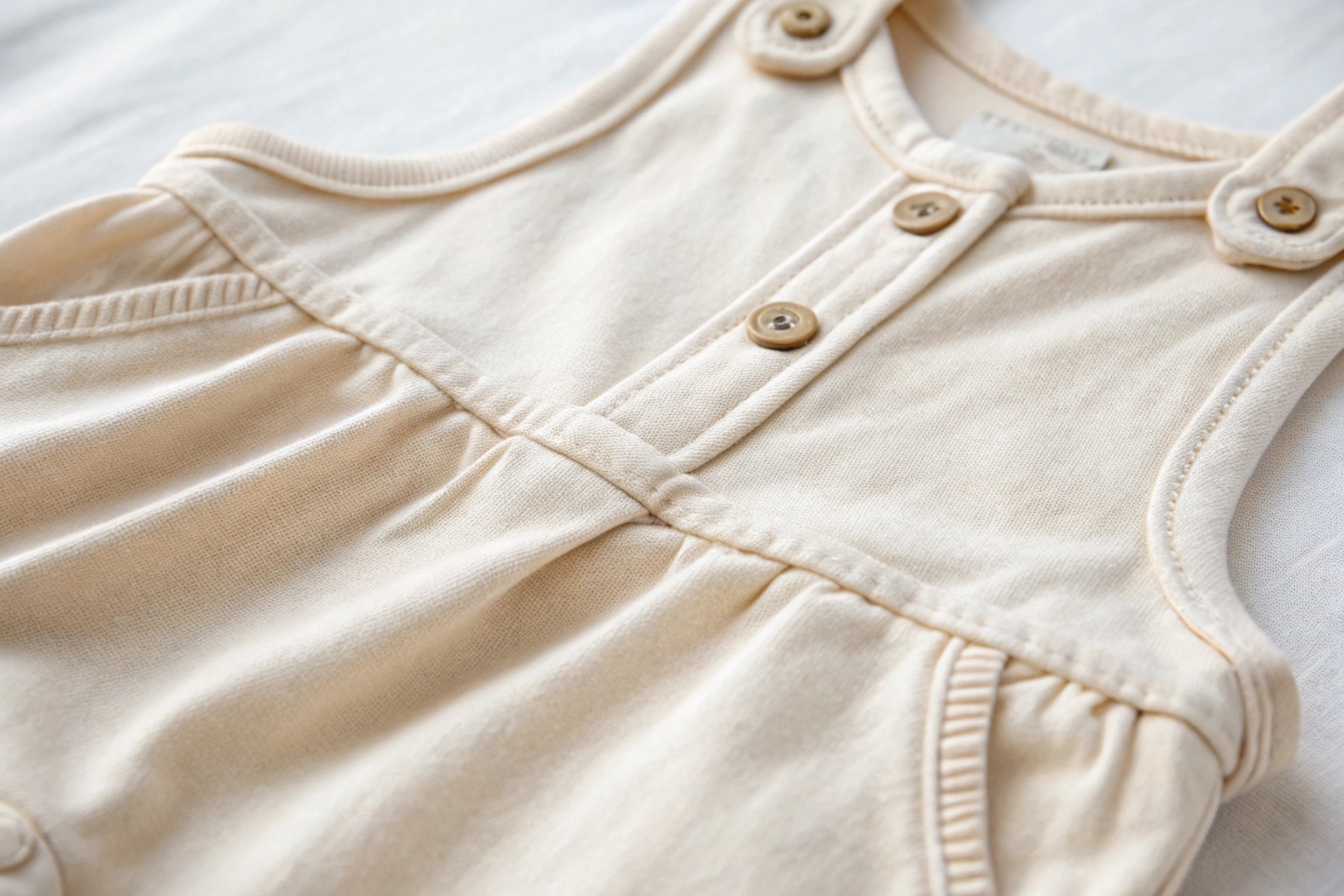It’s a common shock at checkout—tiny clothes with not-so-tiny price tags. Why does baby clothing often cost more than adult basics?
Baby clothing costs more per unit because of strict safety standards, smaller production runs, specialized materials, and added manufacturing complexity required for infant garments.
What looks simple on the outside is usually a carefully constructed piece built for delicate skin, safety, and compliance.
Why Baby Clothes Have Higher Cost per Unit
A newborn onesie might be a third the size of a men’s T-shirt—but it’s often not a third of the price. And there’s a good reason for that.
Baby clothing costs more per unit because of lower economies of scale, higher scrap rates, slower sewing times, and detailed finishes that increase labor input.
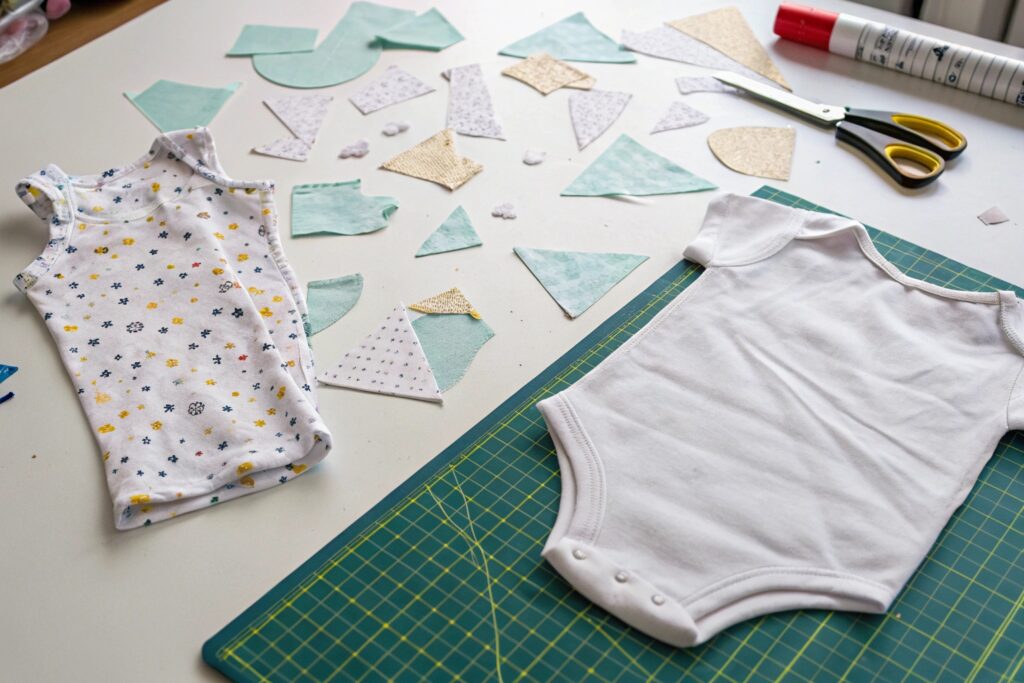
Why are baby clothes more expensive despite using less fabric?
Less fabric doesn’t equal less cost. In fact, small-scale garments create more production challenges. Here’s why:
- Cutting precision: Tiny parts increase fabric waste if misaligned.
- Sewing complexity: Smaller openings, sleeves, and collars are harder to stitch.
- More trims: Baby garments often use extra features like snaps, elastic bindings, tags, and soft piping.
- Slower handling: Operators move slower on baby sizes to avoid distortion and quality issues.
At Fumao Clothing, our line speed for adult T-shirts is 3x faster than baby onesies. Even though the size is small, the handling is more sensitive, and the QA pass rate needs to be higher.
Why does small-batch production raise babywear prices?
Adult fashion moves in large batches—thousands of units per style. Babywear, especially for boutique or seasonal lines, is made in smaller volumes.
Smaller batches mean:
- Less bulk discount on materials
- More setup time per style
- Higher unit labor cost
- Fewer automation opportunities
If you’re buying from a brand that positions itself as “safe,” “organic,” or “eco-friendly,” chances are their MOQ (minimum order quantity) per size is low—and that raises the price further.
Fabric and Safety Standards in Infant Apparel
What touches a baby’s skin matters. That’s why babywear isn’t just about looks—it’s about safety, softness, and strict compliance.
Infant apparel requires soft, hypoallergenic, and certified fabrics that are more expensive to source and test than general adult apparel materials.
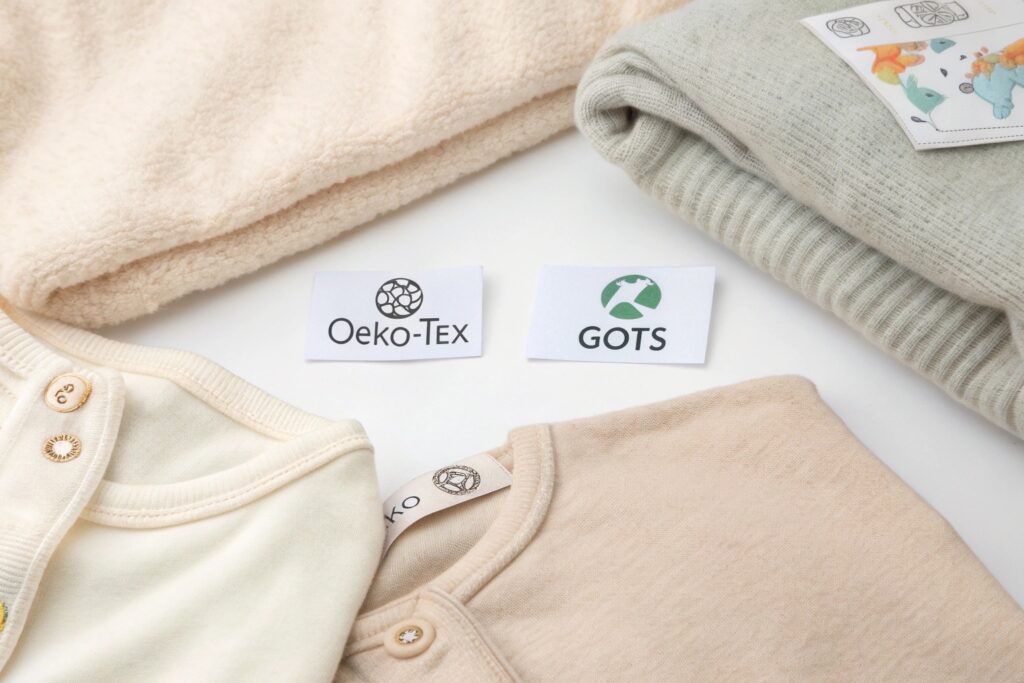
What kind of fabrics are used for baby clothing, and why are they more expensive?
Babywear demands a higher grade of raw materials:
- Organic cotton: Grown without pesticides; certified by GOTS or OEKO-TEX.
- Interlock or ribbed knits: Softer and stretchier than standard jersey.
- Brushed finishes: For fleece or flannel babywear, extra processing creates a gentle touch.
- Chemical-free dyes: Avoiding formaldehyde or heavy metal residues.
Here’s a cost breakdown:
| Fabric Type | Price per Kg (Average) | Used in Adults? | Used in Babies? |
|---|---|---|---|
| Basic cotton jersey | $3.50–$5.00 | Yes | Rarely |
| Organic cotton | $6.00–$8.50 | Rare | Often |
| Bamboo viscose | $8.00–$10.00 | Sometimes | Frequently |
Buyers who order babywear from us usually request OEKO-TEX 100 or GOTS-certified fabric, which increases base costs by 15–25% per meter compared to non-certified cotton.
Why do baby clothes need to meet higher safety requirements?
Because babies:
- Chew their sleeves
- Rub their faces into collars
- Can choke on loose trims
That means every component must be tested—not just the fabric:
- Dyes and finishes (for toxins)
- Snaps and buttons (for pull strength and sharp edges)
- Elastic (for skin sensitivity and latex-free content)
- Seams (for strength and tear-resistance)
At Fumao, we test each production lot for colorfastness, nickel release, and snap retention. These compliance steps don’t apply to adult clothing—and they cost money.
Production Complexity in Small-Sized Garments
Making baby clothes may seem like “just smaller sewing,” but it’s not. Tiny details often require more attention and skill than adult garments.
The smaller the garment, the more precision is needed in cutting, sewing, and assembling. Babywear requires specialized machines, skilled operators, and slower handling per piece.
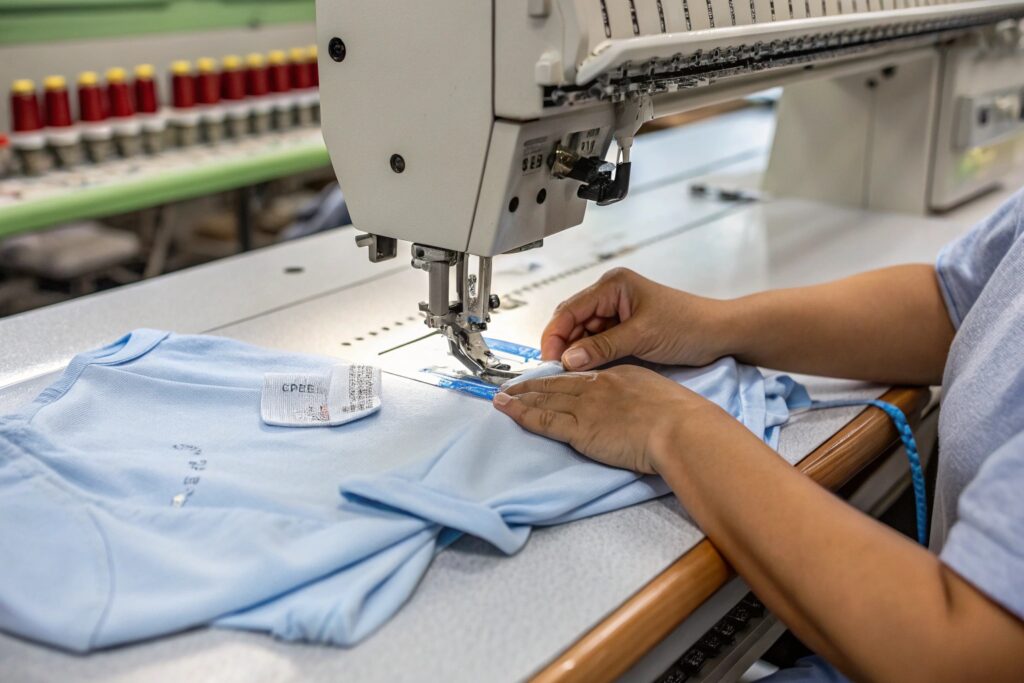
What production challenges are unique to infant clothing?
Some of the challenges include:
- Micro-finishing: Baby hems, necklines, and sleeves use finer stitches and narrower folds.
- Snap alignment: Snaps must align perfectly or garments get rejected in QA.
- Bias binding: Most baby garments use bound edges—more labor-intensive than standard hems.
- Stretch-sensitive fitting: Babies grow fast, so sizing must balance stretch and shape retention.
Here’s how production times compare:
| Garment Type | Average Line Time Per Piece |
|---|---|
| Adult T-shirt | 2–3 minutes |
| Baby bodysuit | 6–8 minutes |
| Baby romper | 8–12 minutes |
Buyers working with factories like ours often don’t realize this at first. But once they scale, they begin to understand why even a minor detail—like curved snap plackets—can increase cost across thousands of units.
Why do small garments generate higher defect and rejection rates?
Mistakes are magnified when the garment is small:
- A 1 cm misalignment ruins a neck opening
- Threads get jammed in tiny seams
- Stitch skips are more visible in tighter stitch zones
These errors increase rework, waste, and QC inspection times.
To maintain high output standards, we’ve added mid-line inspections every 2 hours and trained babywear-specific operators. This brings cost up—but also reduces returns and customer complaints.
How Certification Drives Up Babywear Prices
You’ve probably seen those babywear labels: “GOTS Certified,” “OEKO-TEX Approved,” “Lead-Free.” These aren’t just buzzwords—they come at a cost.
Baby clothes cost more due to mandatory or voluntary certifications that require testing, audits, and verified safety practices throughout the supply chain.
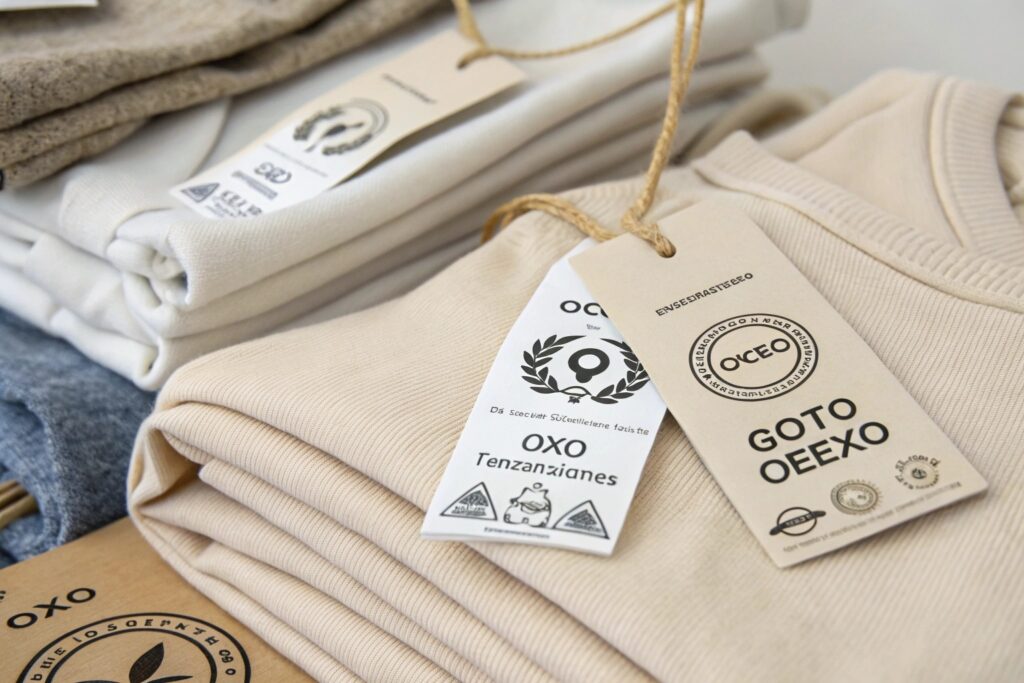
What certifications are required or expected for baby clothing?
Most international buyers request some or all of the following:
- OEKO-TEX Standard 100: Tests for 100+ harmful substances.
- GOTS (Global Organic Textile Standard): Covers organic content, processing, and labor conditions.
- CPSIA Compliance (U.S.): Requires lead and phthalate testing, tracking labels.
- EN 71-3 (Europe): Safety standard for migration of heavy metals in toys and applicable trims.
Getting and maintaining these certifications means:
- Third-party lab testing per batch
- Factory audits and documentation
- Component traceability (yarns, snaps, dyes, etc.)
Here’s what that adds to cost:
| Certification Type | Added Cost (per style) |
|---|---|
| OEKO-TEX | $100–$300 testing + 10–15% fabric upcharge |
| CPSIA Tracking Labels | ~$0.05–$0.10 per garment |
| GOTS Organic Yarn | 15–25% material increase |
At Fumao, we handle compliance for our buyers—because many don’t have time or resources to manage certifications independently. But these assurances aren’t free—they’re built into the unit price.
Why do buyers still choose certified babywear despite higher costs?
Because it matters.
Parents care more about baby product safety than anything else. Buyers who invest in compliant, certified babywear gain:
- Fewer returns due to rashes or reactions
- Better retail positioning (premium shelves)
- Stronger brand trust among parents
- Easier access to large retailers requiring compliance (Target, John Lewis, etc.)
Certification is no longer optional in many Western markets—it’s part of what makes a brand credible in the baby category.
Conclusion
Baby clothing costs more than adult basics because it takes more to make—more care, more compliance, and more quality control. When the wearer is fragile, every detail matters.

